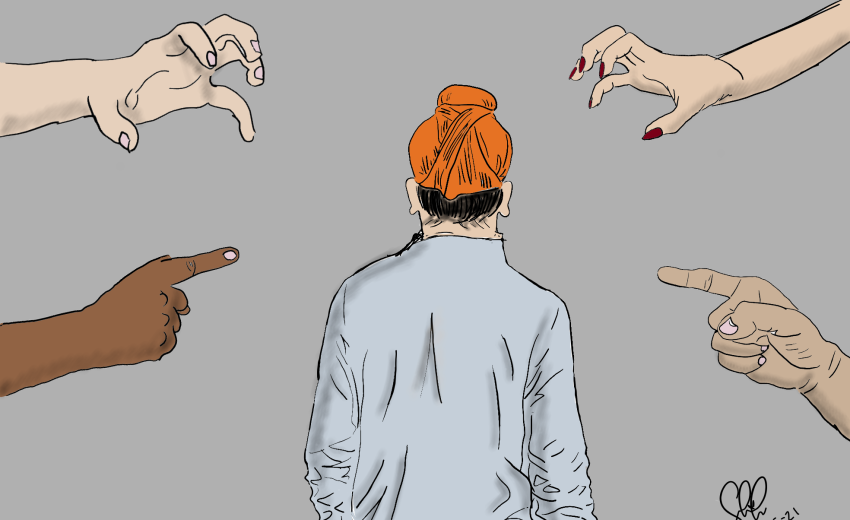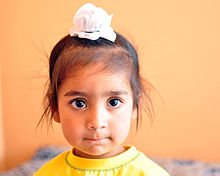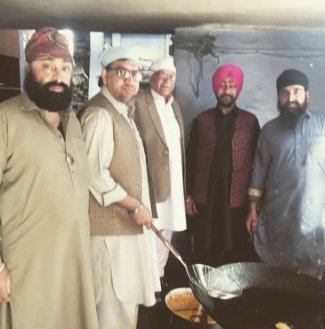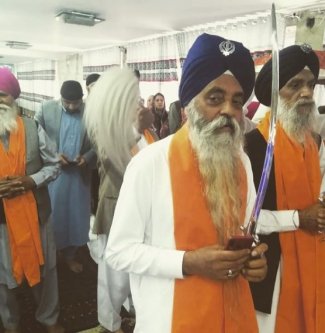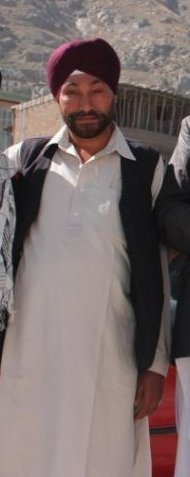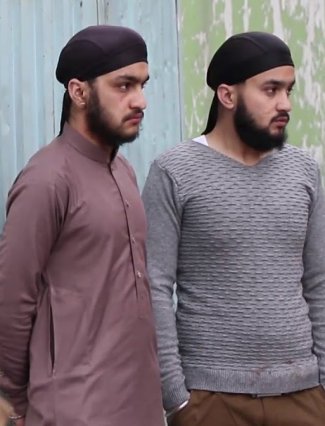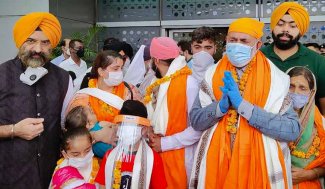The word Kachalu means potato in Afghanistan. In India it refers to yam, potato is called just Aallo. Why am I mentioning this vegetable? This vegetable is often the word used to harass Sikh men and boys in Afghanistan. Referring to the bun of hair that Sikh men tie on the top of their head, often called the joora or jurhi, is how Sikh men take care of their sacred hair. On top of this tied the turban or the smaller patka.
In every country that Sikhs live there is some level of teasing and harassment occurs. Hair, as Professor Darshan Singh pointed in a recording, ironically is not a marker of a Sikh. All humans have hair--Sikhs just don’t cut it while many, but not all, religions/sects cut it. Hair is a marker of humanity, not of Sikhs. Keeping the Kesh is a marker of Sikhs. However, a trait that everyone possesses is often a point of teasing and harassment for Sikhs.
Some teasing can be taken in good humor--and Sikhs are well known for their joyful sense of humor which comes from their relaxed self-confidence and comfort with their own identity. Most teasing ventures into harassment, which sometimes has to be handled and dealt with. However, some harassment goes clearly into the domain of severe abuse and debilitating social injustice. This is what I discovered in my project on the Afghan Sikhs and Hindus.
Fascinated by Afghanistan, I chose to study the Afghan Sikhs and Hindu community for a project in my school because it is not widely known about. In a country that is almost completely Muslim, lies a native community of indegenous Sikhs and Hindus. Afghanistan was, since ancient times immemorial, a Hindu land. Gandhari, mother of the Kauravas, mentioned in the Mahabharata, was daughter of king of Gandhar (Kandahar in Southern Afghanistan). Afghanistan was part Indian empires of Ashoka, the Guptas and the Mughals. There exists, even today, a native Afghan community which is a remnant of the population that didn’t convert to Islam and survived the religion-inspired proselytizing onslaught of the Arabs, Persians, and Central Asian invasions of Afghanistan.
When Guru Nanak Dev Ji went to Afghanistan in his fourth Udaasi, he visited Kabul and Jalalabad. Hence, many converted to Sikhism. They continued to be aligned with the progression of subsequent Sikhs Gurus. For example, the famous Bibi (women) who did seva at the Harmandir Sahib during construction was from Kabul, Afghanistan. The well-known saakhi of Guru Arjun Dev ji and Mata Gujri Ji doing seva of the sangat at Gurudwara Pipli Sahib is the sangat from Afghanistan. Bhai Gonda was sent by Guru Har Rai ji to Kabul and started a Dharamshalas (Gurudwara). Guru Gobind Ji Sahib sent Hukamnamas to Kabul Sangat, blessing them and lauding their devotion and dedication. Kabul sangat sent beautiful tents to Guru Ji and also sent the famed horses and weapons to him. The famous Bhai Nand Lal Goya was from Ghazni, Afghanistan (same place as invader Mahmud Ghaznavi). He is well known as the preeminent poet amongst the fifty-two poets of Guru Gobind Singh Ji. Other than Sri Guru Granth Sahib and Bhai Gurdas Ji, he is the only other author whose compositions are approved for Shabad Kirtan singing (devotional music). Afghanistan has a long and illustrious association with Sikhism.
Until about the early 1990s, about quarter million Sikhs and Hindus lived in Afghanistan. This number has dwindled dramatically with the civil war of the 1980s, the Taliban rule of the 1990s and the American-led attacks post 9/11 in 2001. This proud community is now reduced to about 200.
This brutal history of the decimation of the Sikh and Hindu community is sad tale of targetted terrorism. The last straw was the attack on Gurdwara Guru Har Rai in Shor Bazar, Kabul on March 25, 2020.
When I picked up this project I began the process of interviewing Afghan Sikhs and Hindus. I talked Afghan Sikhs in Europe, US and India and more importantly in Afghanistan as well. One story appeared repeatedly in my conversations: The story of the unabated, incessant harassment of Sikh boys and men.
One Afghan Sikh man from Kabul said that daily life was hard. Every day he got shouted at by Muslims students in school: “Why do you have the Kachalu on your head?” Kachalu is a Dari and Pashto word for potato. (Dari, aka Persian, is an Afghan language). In India Kachalu often refers to Yam. This has become a famous epithet targeted towards Sikh men.
Teasing and harassment is hardly uncommon. My father grew up in India in Lucknow, Uttar Pradesh. At his elite convent school, he tells me, his joorhi was called egg or ladoo (indian sweet). Yelling this never failed to elicit merciless laughter from others. Once even his teacher called his hair and patka as an antenna and ladoo, putting the class in a mirthful bout of laughter at his expense. From what he tells me, it was uncomfortable but did not cause any trauma. His friends and teachers continue to be his close friends till date.
In the case of Afghanistan, this harassment has become endemic. This once-proud country has undergone dramatic abuse from neighbors and world powers eager to exploit it for their own needs. The once graceful and honorable Afghan is now becoming brutalized and more fundamentalist and more stringent in its religious identity. The traditional social structures built over millenniums that supported honorable minority presence have broken down. Concomitant to the social collapse, the Sikh men faced aggressive verbal and physical violence.
Young boys at schools are continuously harassed. The Afghan Sikh man from Kabul, who fled Afghanistan, told me in the interview that his fellow students would pull his hair and beat him. “You are a Kaafir (infidel); convert to the real faith,'' he heard on a daily basis. Teachers watched and did nothing to help. Parents of fellow students didn’t help. Finally his parents pulled him out of the school and stopped his education.
Another Sikh who still lives in Kabul, Afghanistan, also had to pull out his children from a regular government school to a paid private school. He was financially able to do so. For those who cannot afford to, however, they have faced the reality of keeping their children illiterate. (Not one of them even contemplated cutting their hair, incidentally. I asked them this question and all my interviewees scoffed at my question with disdain.)
The teasing of Sikh students in Afghanistan is tied to the greater issue of the religious persecution of the Afghan Sikhs. Afghan Sikhs have faced countless fatal attacks and systemic discrimination in the past few decades following the Afghan Civil War which has resulted in a mass exodus from their native country. Afghanistan has been an important part of Sikh history from time immemorial, and it is our duty as Sikhs to preserve this history and help our Afghan Sikh brothers and sisters fleeing persecution.
When Afghan Sikhs take refuge in other countries, their problems don’t come to an end. They face issues regarding finance, housing, and gaining refugee status in the country. By earning refugee status, Afghan Sikhs will be allowed to stay in a new country permanently and start a new life. You can help the Afghan Sikhs by sending a letter to your local politicians urging them to provide refugee status in the United States. I have written a draft of this letter which can be found on my website: simsur.wixsite.com/protectafghansikhs. If you want to learn more about the Afghan Sikhs and keep in touch with the changing situations, follow my social media below.
References
~Bhasin, Ram Saran. Interview with an Afghan Hindu Resident of Kabul, Afghanistan Sahib Kaur and Surinder Singh. 1 February 2021. Video Call.
~Kaur, Harmeet. Interview With a 1st Generation Afghan Sikh Sahib Kaur. 28 November 2020. Zoom.
~Mata, Naveena. Interview with Afghan Hindu living in America Sahib Kaur. 18 January 2021. Zoom.
~Mata, Raveena. Interview with Afghan Hindu who did her Extended Essay on Afghan Sikhs and Hindus Sahib Kaur. 18 January 2021. Zoom.
~Shayegan, Ehsan, Mahdi Frough and Sayed Masood Sadat. Survey of the Afghan Hindus and Sikhs. Vers. p.74. February 2019. 2020.
~Singh, Gurnam. Interview with President of Gurdwara Karte Parwan in Kabul, Afghanistan Sahib Kaur. 28 December 2020. Phone Call.
~Singh, Kabul. Meeting with Gurdwara Guru Har Rai Sahib Ji Shooting Survivor. Sahib Kaur. 4 September 2020. Phone.
~Singh, Inderjeet. Afghan Sikhs and Hindus. Readomania, 2019.
~Singh, Balwinder. Interview with Survivor of the 2020 Kabul Gurdwara Attack Sahib Kaur. 23 December 2020. Zoom.
~Singh, Pritpal. Interview with Afghan Sikh Filmmaker Sahib Kaur. 26 November 2020. Zoom.
~Singh, Shami. Interview with Sikh Resident of Kabul, Afghanistan Sahib Kaur. 9 January 2021. Zoom.
